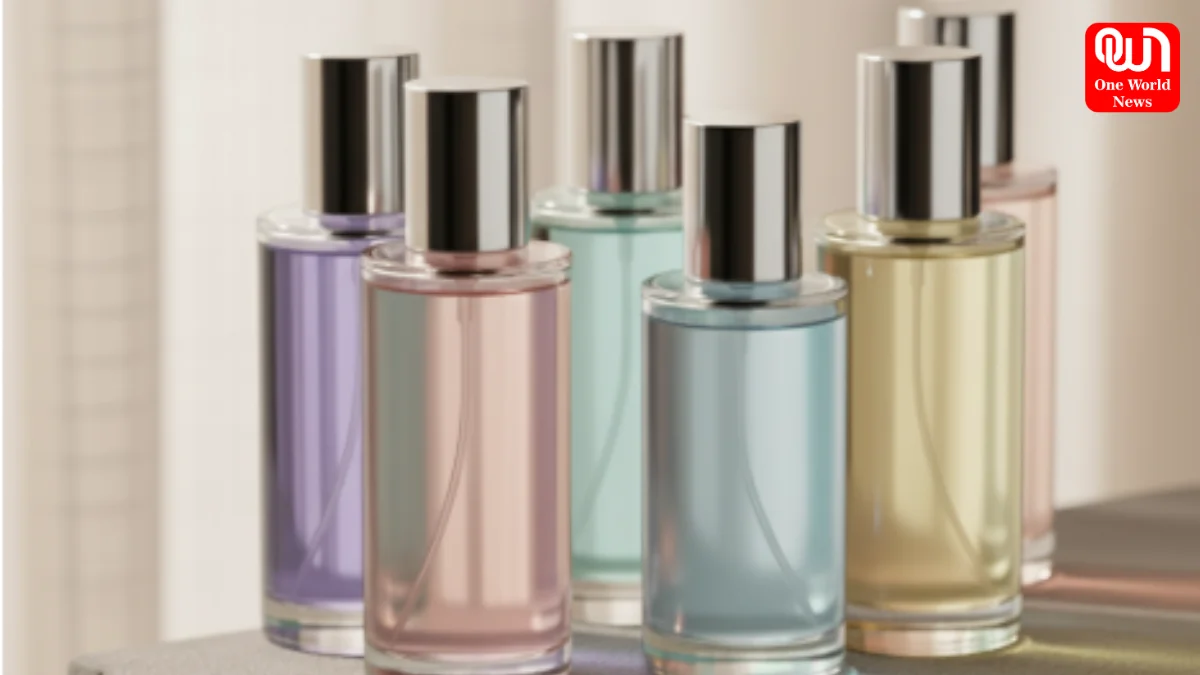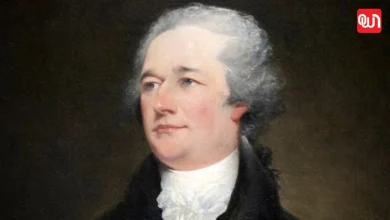Niche Fragrances Explained: Why ‘Indie Perfumes’ Are Outselling Designer Brands for Men and Women
These designer fragrances have dominated the market for decades, but something seismic is shifting in the perfume world.
Walk into any luxury department store and you’ll see them: the usual suspects. Chanel, Dior, Tom Ford, Gucci—prestigious names with beautiful packaging and celebrity endorsements. These designer fragrances have dominated the market for decades, but something seismic is shifting in the perfume world. Niche and indie fragrance houses—brands you’ve probably never seen in conventional retail—are quietly outselling the establishment, and they’re doing it without massive marketing budgets or famous faces.
The numbers tell a compelling story. Industry reports show niche fragrances growing at 15-20% annually while designer fragrances struggle with single-digit growth. Indie perfume houses are launching to waitlists thousands of people long. Fragrance enthusiasts are spending more per bottle on niche scents than they ever did on designers. And perhaps most tellingly, major conglomerates like LVMH and Estée Lauder are rapidly acquiring niche brands, desperate to capture this exploding market segment.
So what exactly are niche and indie fragrances, why are they suddenly everywhere, and should you be paying attention? Let’s break down this fragrant revolution.
Defining the Categories: Designer, Niche, and Indie
Understanding the terminology helps clarify what makes these fragrances different:
Designer fragrances are created by fashion houses primarily known for clothing and accessories—Chanel, Dior, Prada, Versace. These perfumes are mass-produced, widely distributed, and marketed heavily. They’re designed to appeal to broad audiences, which often means playing it safe with familiar scent profiles.
Niche fragrances come from houses focused exclusively on perfumery. Brands like Creed, Tom Ford Private Blend, Le Labo, Byredo, and Maison Francis Kurkdjian fall into this category. They use higher-quality ingredients, take more creative risks, produce smaller batches, and charge premium prices. Distribution is selective—you won’t find them in every department store.
Indie fragrances are the insurgents. These are small, often founder-led brands like Imaginary Authors, Sixteen92, Olympic Orchids, and hundreds of others. They’re frequently one-person operations or tiny teams, producing limited quantities with complete creative freedom. Many operate primarily online, selling directly to consumers.
The lines blur constantly. Some niche brands have grown large enough to feel mainstream, while certain designer brands have launched niche-like exclusive lines. What matters isn’t the label but the philosophy: creative freedom, quality ingredients, and authentic artistry over mass appeal.
Why the Shift? The Perfect Storm
Several converging factors have created ideal conditions for niche and indie fragrances to thrive:
Fragrance education explosion: YouTube, TikTok, Instagram, and fragrance forums have created unprecedented access to perfume education. Consumers who once knew only department store offerings now understand notes, accords, perfumers, and houses. This educated audience craves sophistication and uniqueness that designer mass-market fragrances rarely provide.
Uniqueness as currency: In an Instagram-driven world, standing out matters. When everyone at the office wears the same designer fragrance, its appeal diminishes. Niche and indie fragrances offer olfactory individuality—you’re unlikely to encounter someone wearing the same obscure scent.
Authenticity hunger: Modern consumers, particularly millennials and Gen Z, value authentic storytelling and genuine artistry over corporate marketing. Indie perfumers sharing their creative process and inspiration resonate more deeply than celebrity endorsements and sexy advertising.
Direct-to-consumer enablement: E-commerce has democratized perfume sales. Indie perfumers no longer need expensive retail partnerships to reach customers. They can build communities, tell their stories, and sell directly, keeping prices reasonable while maintaining quality.
Quality over quantity: Many consumers have realized that owning three expensive, unique niche fragrances brings more joy than ten affordable designer scents that smell similar. The mindset shift from fragrance as disposable to fragrance as collectible art has benefited niche and indie brands enormously.
Ingredient transparency: Niche and indie perfumers typically disclose notes, inspirations, and sometimes even specific ingredients. This transparency appeals to consumers who want to understand what they’re putting on their skin, much like the clean beauty movement in skincare.
What Makes Niche and Indie Fragrances Different
The distinction isn’t just marketing—these fragrances smell and perform differently:
Ingredient quality: Niche houses use higher concentrations of natural materials and premium synthetics. Where a designer fragrance might use 2% natural rose, a niche fragrance might use 10% or create rose from rare, expensive absolutes. You can often smell the difference immediately—more depth, complexity, and realism.
Creative freedom: Designer fragrances are created by committee with focus groups, sales projections, and brand image constraints. Niche and indie perfumers create what they find beautiful or interesting, resulting in far more adventurous compositions. Want a perfume that smells like a library? An indie perfumer has created it. A fragrance evoking gasoline and leather? It exists in the niche world.
Complexity and evolution: Many designer fragrances smell similar from application to dry-down—what you spray is what you get for hours. Niche fragrances typically have distinct phases, evolving on your skin in interesting ways. A Noir Perfume from a niche house might open with bright bergamot, develop into dark florals, and settle into smoky woods—a journey rather than a static experience.
Longevity and projection: Higher fragrance concentrations (often 20-30% in niche vs. 10-15% in designers) mean better performance. Niche fragrances frequently last longer and project further, making their higher prices more justifiable per wear.
Unconventional notes: Indie perfumers experiment with notes rarely found in mainstream perfumery—petrichor (rain on dry earth), tobacco, soil, mushrooms, metal, even “blood.” These unconventional choices create truly unique experiences.
The Gender-Fluid Advantage
One of niche and indie perfumery’s most appealing aspects is its wholesale rejection of gendered marketing. While designer brands still largely segregate fragrances into “for him” and “for her,” niche brands simply create beautiful scents for anyone who appreciates them.
This approach resonates powerfully with younger consumers who find gendered fragrance marketing outdated and restrictive. Why should woody, sophisticated scents be “masculine” while florals are “feminine”? Niche perfumery acknowledges that scent preference has nothing to do with gender identity.
You’ll find sophisticated floral compositions marketed to everyone, not just as perfume for women. You’ll discover gentle, beautiful musks that men wear confidently. The freedom to explore without arbitrary gender boundaries has opened fragrance exploration for millions who felt constrained by traditional categories.
Read More: 11 Makeup Trends Inspired by Your Favorite B-town Celebs
The Indie Advantage: Small Batch Magic
Indie perfumers particularly benefit from their scale. Operating small allows for:
Experimental releases: An indie perfumer can create a weird, niche fragrance for 100 people who’ll absolutely love it, rather than needing to please 100,000 people.
Community connection: Indie perfumers interact directly with customers, taking feedback, sharing stories, and building genuine relationships. You might message an indie perfumer on Instagram and get a personal response—try that with Chanel.
Sustainability: Small batch production reduces waste. Many indie perfumers source ingredients ethically, use eco-friendly packaging, and maintain transparent supply chains.
Accessibility: While niche fragrances from established houses can cost $300-500, many indie perfumes range from $50-150, making artistic perfumery more accessible.
Rapid innovation: Without corporate bureaucracy, indie perfumers move quickly. They can conceptualize, create, and release new fragrances in months rather than years.
How to Explore Niche and Indie Fragrances
If you’re intrigued but don’t know where to start, here’s a practical guide:
Sample first: Never blind-buy expensive niche fragrances. Use sampling services like Scent Split, Luckyscent, or directly from brand websites. Invest $20-40 in samples before committing to full bottles.
Join communities: Reddit’s r/fragrance, Fragrantica, Basenotes, and fragrance Discord servers connect you with enthusiasts who share recommendations and sell samples/decants.
Visit niche boutiques: Cities increasingly have specialty perfume shops carrying niche and indie lines. The staff are usually knowledgeable enthusiasts who provide excellent guidance.
Understand your preferences: Before exploring, identify what you like. Do you gravitate toward fresh, woody, floral, oriental, or gourmand scents? This helps narrow the overwhelming number of options.
Start with accessible niche: Brands like Le Labo, Byredo, Diptyque, and Jo Malone bridge designer and niche, offering more adventurous compositions than mass-market while remaining wearable and available.
Research perfumers: Once you find a fragrance you love, research the perfumer who created it. Perfumers have signatures, and if you love one of their creations, you’ll likely enjoy others.
Be patient: Your nose might need time to appreciate unconventional fragrances. A scent that seems weird initially might become fascinating with repeated wearings.
The Future of Fragrance is Independent
The rise of niche and indie fragrances isn’t a temporary trend—it represents a fundamental shift in consumer values and industry structure. As people increasingly seek authenticity, uniqueness, and quality over mass-market convenience, this sector will continue growing.
We’re also seeing fascinating cross-pollination. Successful indie perfumers are being acquired by or partnering with larger houses, bringing their creativity to bigger platforms. Meanwhile, some designer brands are launching truly niche-quality exclusive lines, recognizing that consumers will pay premium prices for genuine artistry.
What excites most about this shift is its democratizing effect. Perfumery, once the exclusive domain of a few European houses, now includes voices from around the world—indie perfumers in Portland, Mumbai, Tokyo, and São Paulo creating fragrances reflecting their unique perspectives and cultures.
Whether you’re a fragrance novice or longtime enthusiast, the niche and indie world offers olfactory experiences simply unavailable in mainstream perfumery. Yes, they require more investment—of money, time, and attention—but the reward is wearing something truly special, something that expresses your individuality rather than a marketing department’s focus group findings.
The fragrance revolution is here. The question isn’t whether to explore niche and indie perfumery, but rather which rabbit hole to dive down first. Choose wisely, sample extensively, and prepare to discover that perfume can be so much more than you ever imagined.
We’re now on WhatsApp. Click to join.
Like this post?
Register at One World News to never miss out on videos, celeb interviews, and best reads.








